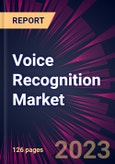Speak directly to the analyst to clarify any post sales queries you may have.
The report offers an up-to-date analysis regarding the current market scenario, the latest trends and drivers, and the overall market environment. The market is driven by increasing adoption of technologically advanced mobile devices, increasing demand for voice-driven navigation systems and workstations, and growing use of voice biometrics.
The voice recognition for smartphones market in US is segmented as below:
By Technology
- Automatic speech recognition
- Text-to-speech
By Deployment
- Cloud-based
- Embedded
By Geographical Landscape
- North America
The report on the voice recognition for smartphones market in US covers the following areas:
- Voice recognition for smartphones market in US sizing
- Voice recognition for smartphones market in US forecast
- Voice recognition for smartphones market in US industry analysis
The study was conducted using an objective combination of primary and secondary information including inputs from key participants in the industry. The report contains a comprehensive market and vendor landscape in addition to an analysis of the key vendors.
The report presents a detailed picture of the market by the way of study, synthesis, and summation of data from multiple sources by an analysis of key parameters such as profit, pricing, competition, and promotions. It presents various market facets by identifying the key industry influencers. The data presented is comprehensive, reliable, and a result of extensive research - both primary and secondary. The market research reports provide a complete competitive landscape and an in-depth vendor selection methodology and analysis using qualitative and quantitative research to forecast the accurate market growth.
Table of Contents
Executive Summary
The following companies are recognized as the key players in the global voice recognition for smartphones market in us: 3M Co., Advanced Voice Recognition Systems Inc., Alphabet Inc., Amazon.com Inc., Apple Inc., AT&T Inc., Aware Inc., Baidu Inc., International Business Machines Corp., Koninklijke Philips N.V., LumenVox GmbH, M2SYS, Microsoft Corp., Qualcomm Inc., Rev.com Inc., Samsung Electronics Co. Ltd., Sensory Inc., Sonix Inc., Summa Linguae Technologies S.A., and Verizon Communications Inc..Commenting on the report, an analyst from the research team said: "The latest trend gaining momentum in the market is growing use of ai integrated with voice speech recognition."
According to the report, one of the major drivers for this market is the increasing adoption of technologically advanced mobile devices.
The study was conducted using an objective combination of primary and secondary information including inputs from key participants in the industry. The report contains a comprehensive market and vendor landscape in addition to a SWOT analysis of the key vendors.
Companies Mentioned (Partial List)
A selection of companies mentioned in this report includes, but is not limited to:
- 3M Co.
- Advanced Voice Recognition Systems Inc.
- Alphabet Inc.
- Amazon.com Inc.
- Apple Inc.
- AT&T Inc.
- Aware Inc.
- Baidu Inc.
- International Business Machines Corp.
- Koninklijke Philips N.V.
- LumenVox GmbH
- M2SYS
- Microsoft Corp.
- Qualcomm Inc.
- Rev.com Inc.
- Samsung Electronics Co. Ltd.
- Sensory Inc.
- Sonix Inc.
- Summa Linguae Technologies S.A.
- Verizon Communications Inc.








